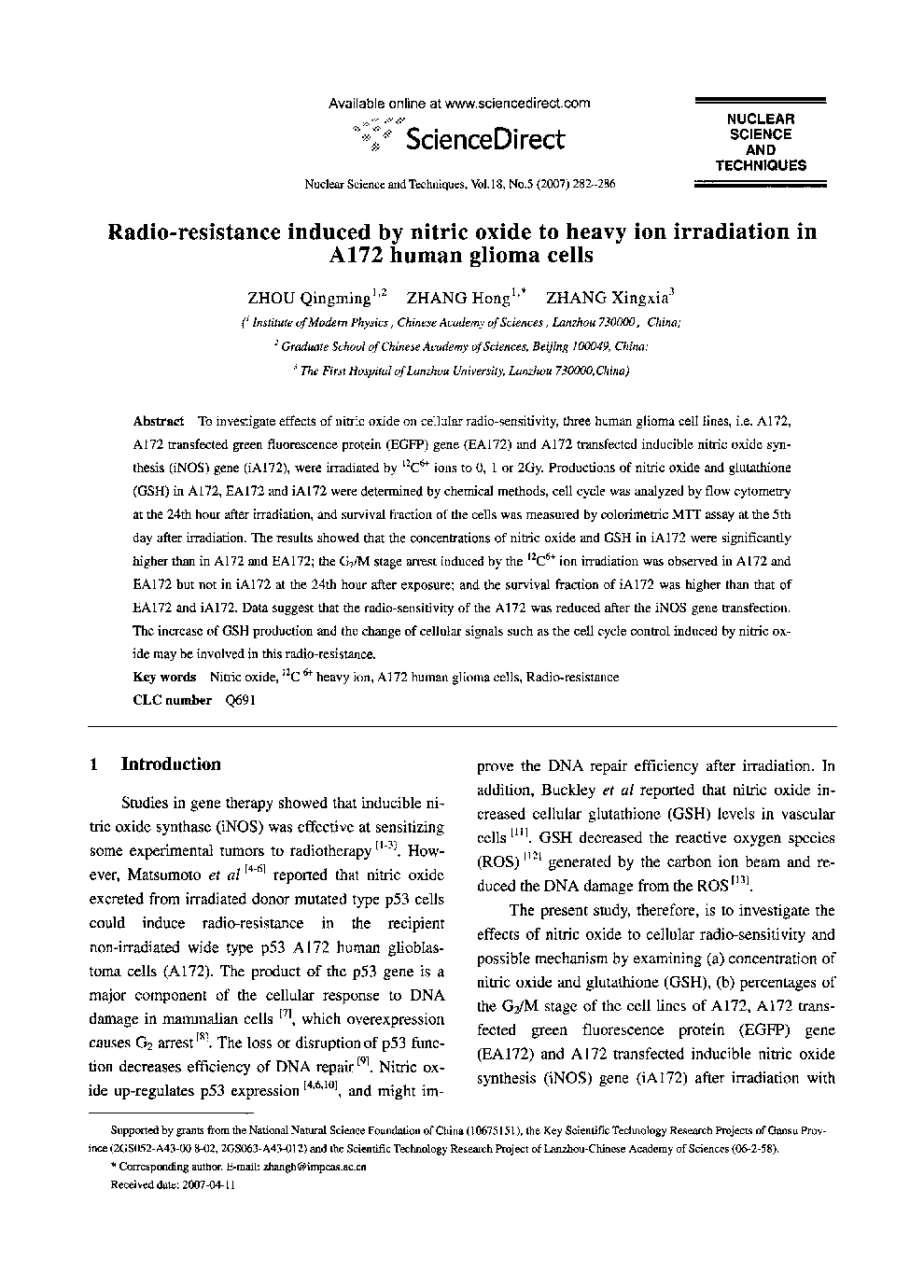| Article ID | Journal | Published Year | Pages | File Type |
|---|---|---|---|---|
| 1848448 | Nuclear Science and Techniques | 2007 | 5 Pages |
Abstract
To investigate effects of nitric oxide on cellular radio-sensitivity, three human glioma cell lines, i.e. A172, A172 transfected green fluorescence protein (EGFP) gene (EA172) and A172 transfected inducible nitric oxide synthesis (iNOS) gene (iA172), were irradiated by 12C6+ ions to 0, 1 or 2Gy. Productions of nitric oxide and glutathione (GSH) in A172, EA172 and iA172 were determined by chemical methods, cell cycle was analyzed by flow cytometry at the 24th hour after irradiation, and survival fraction of the cells was measured by colorimetric MTT assay at the 5th day after irradiation. The results showed that the concentrations of nitric oxide and GSH in iA172 were significantly higher than in A172 and EA172; the G2/M stage arrest induced by the 12C6+ ion irradiation was observed in A172 and EA172 but not in iA172 at the 24th hour after exposure; and the survival fraction of iA172 was higher than that of EA172 and iA172. Data suggest that the radio-sensitivity of the A172 was reduced after the iNOS gene transfection. The increase of GSH production and the change of cellular signals such as the cell cycle control induced by nitric oxide may be involved in this radio-resistance.
Related Topics
Physical Sciences and Engineering
Physics and Astronomy
Nuclear and High Energy Physics
Authors
Qingming ZHOU, Hong ZHANG, Xingxia ZHANG,
